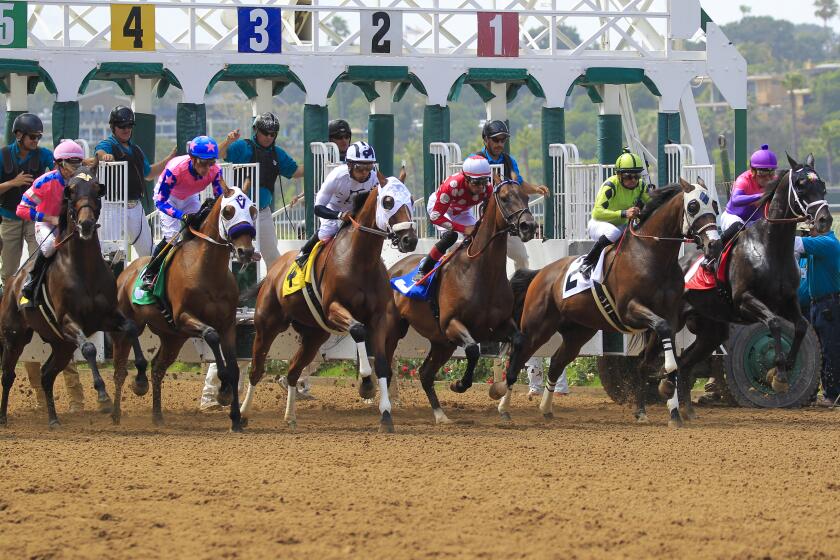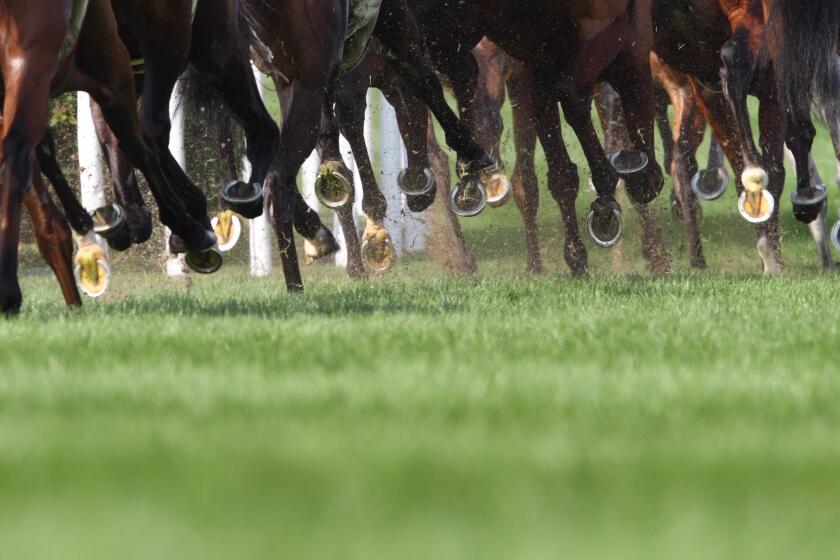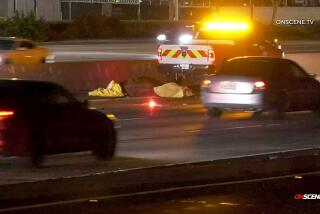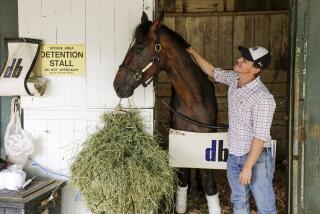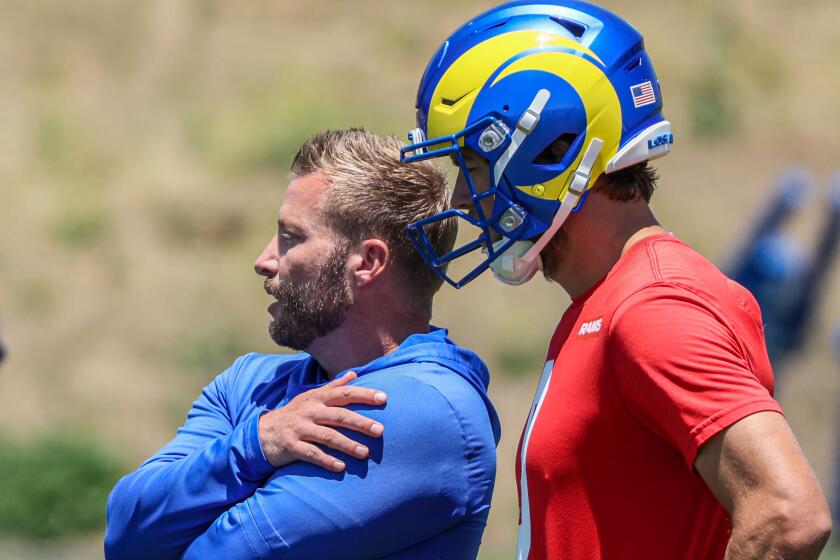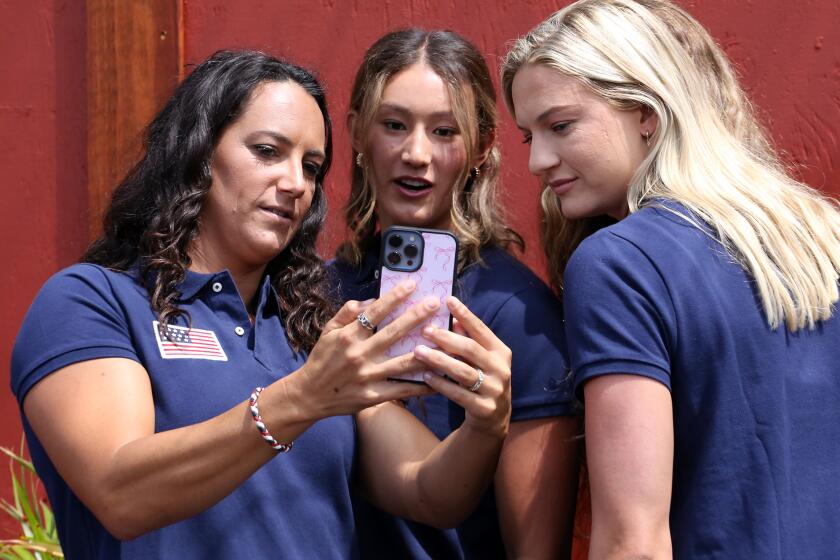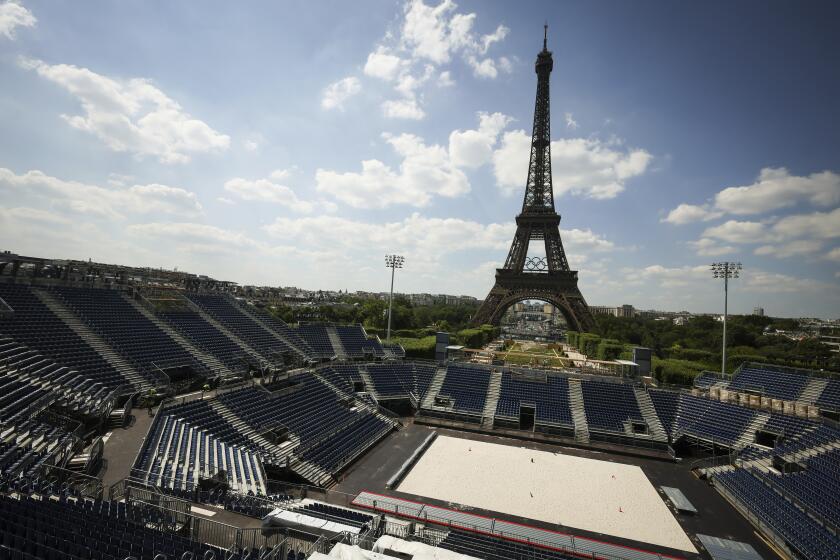News Analysis: How did two horses that died at Del Mar end up at a rendering plant?

On the second day of Del Mar’s summer season last year, the morning quiet was shattered by the sound of two horses crashing into each other, killing both instantly. That kind of freak accident is extremely rare, but when it happens in the midst of unprecedented attention on horse fatalities in Southern California, it is a crisis.
Del Mar decided to be pro-active and within hours called a news conference.
Joe Harper, chief executive of Del Mar, compared the track mishap to a wrong-way driver on a freeway. Dr. Rick Arthur, equine medical director for the California Horse Racing Board, promised necropsies, as is mandated by CHRB rules.
It was then that a bad situation got worse.
Instead of being transported to a UC Davis Animal Health and Safety Laboratory in San Bernardino, Charge A Bunch and Carson Valley were taken to a rendering plant near the El Sobrante Landfill in Corona, processed into animal by-products such as fertilizer and bone meal, and the remains sent to the landfill.
“I got a call first thing in the morning after the accident saying the horses never arrived,” Arthur said. Del Mar got a call from the CHRB, because, by statute, it is the track’s responsibility to get the bodies to the testing laboratory.
It took no time to discover that Stiles Animal Removal had made a mistake. According to a CHRB investigators report, “The owner of Stiles admitted that he forgot to inform the new driver of this requirement [to take to the state lab].”
Del Mar, which was credited for its fast action and transparency after the July 18 accident, has made no public comment about the deaths of the two horses since the day of the news conference.
According to Mike Marten, spokesman for the CHRB, he contacted Mac McBride, Del Mar media director, one day after the mistake was discovered and they spoke the day after that.
“Mac said that Del Mar would make an announcement as soon as a CHRB investigation was complete,” Marten said.
Marten relayed that information by email to Rick Baedeker, then executive director of the CHRB, Chuck Winner, then chairman of the CHRB, Arthur and others. In it he quoted McBride saying that Del Mar would make an announcement after the CHRB investigation and if there were media questions before then the matter should be referred to Del Mar.
Del Mar will start its summer meeting eight days earlier but only race three days a week in response to the coronavirus outbreak. There will be no spectators.
That email might have been one of 19 excluded from a public records request by The Times, which was attempting to reconstruct what happened and why information was never made public. Baedeker and Winner acknowledged the contents of Marten’s email and both believed Del Mar would make the announcement.
Del Mar did not respond to questions as to why information pertaining to the mistake was kept secret but issued a one-paragraph statement last week.
“As soon as the CHRB made us aware of the error by the contractor responsible for transport to the necropsy facility, Del Mar responded immediately and appropriately, including terminating that vendor,” said the statement released by Josh Rubinstein, chief operating officer of Del Mar. “Although the error was made by a vendor and not Del Mar personnel, it is our responsibility to see that the proper protocols are followed. We regret the error and have made changes to ensure that it doesn’t happen again.”
The CHRB had issued a warning letter to Del Mar about the incident on Aug. 26. It was signed by Rubinstein and returned on the 27th. The issuing of a warning to a racing association is unusual. In fact, Baedeker, who retired March 31, can remember no other warnings to a race track in the six years he was executive director.
The warning was obtained by The Times through a public records request.
The boilerplate language has this wording: “This warning letter will not be considered an Official Ruling, will not otherwise be published by the CHRB and will not be forwarded to any national database.”
When jockeys and trainers are given warnings by race track stewards, it is published in the stewards’ minutes.
“We’re a regulator, not a race track with a PR department,” Baedeker said. “We didn’t feel it was our responsibility to put out the information.”
Baedeker went on to explain why the warning was given.
“We could have sanctioned Del Mar but after the investigation, it was clearly an error by the vendor,” Baedeker said. “Given that this was the first time it’s ever gone wrong, the feeling was the problem was taken care of, which is why we went the warning route.”
Both Baedeker and Winner said the matter was never addressed at a board meeting in either public or closed-door sessions.
It doesn’t happen often. Arthur, who has been equine medical director since 2006, can recall a horse being taken to the wrong place only one other time.
“We had an instance years and years ago with a San Luis Rey Downs [training center] horse,” Arthur said. “They didn’t think it had to be sent for necropsy. It was a new guy.”
They were able to find the horse at the landfill and recovered enough to do a necropsy. In the case of Charge A Bunch and Carson Valley, it wasn’t possible.
Apparently, there was another scopolamine contamination late last year and early this year.
“According to my understanding there was nothing left that we could recover,” Arthur said.
If these horses did not die on the track but were instead euthanized, they would not have been eligible for rendering. Because euthanasia involves the injection of a barbiturate, federal rules do not allow the body to be processed and made into by-products. Rendering is a procedure where heat and steam are used to kill pathogens and separate fat, bone and protein.
The old expression about horses being sent to the glue factory does not exist today. While at one time, horse hooves were used to make a kind of glue, now most glue is made only of chemicals.
Last summer, both Del Mar and Santa Anita established a policy that horses that die at the track must be cremated and their remains not sent directly to landfills.
More to Read
Go beyond the scoreboard
Get the latest on L.A.'s teams in the daily Sports Report newsletter.
You may occasionally receive promotional content from the Los Angeles Times.
